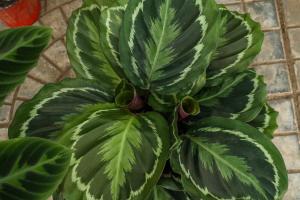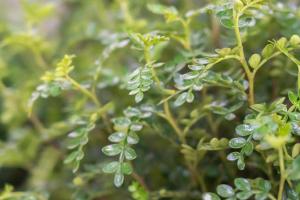How to Remove Algae from Potted Plants
Algae can be a common problem for potted plants that are placed in areas with high humidity or receive too much water. Not only does it look unsightly, but it can also block the essential light and nutrients that the plants need. Fortunately, there are several ways to remove algae from potted plants to ensure they thrive.
Using a Vinegar Solution
One effective method for removing algae from potted plants is to use a vinegar solution. Simply mix one part of white vinegar with four parts of water and apply it to the affected plant using a spray bottle, taking care to avoid the leaves. Allow the solution to sit on the plant for around 10 minutes before gently scrubbing with a soft-bristled brush. Once the algae has been removed, rinse the plant generously with clear water and repeat the process if necessary.
Using Hydrogen Peroxide
Hydrogen peroxide is an excellent solution for removing algae from potted plants, primarily because it disinfects the plant and helps to prevent future growth. Mix one part of hydrogen peroxide with four parts of water, transfer the solution into a spray bottle, and apply it to the affected plant. Allow the solution to sit for around 15 minutes before rinsing it off with clear water. Be sure to cover the soil with a sheet or towel to avoid getting the solution on the surface.
Using a Salt Solution
Mixing salt with water can also be an effective way to remove algae from potted plants, but it's essential to avoid using too much salt. Mix around one tablespoon of salt with a cup of water, ensuring that the salt dissolves. Apply the salt solution to the affected areas and allow it to sit for around 15 minutes before rinsing it off with clear water. Be sure to rinse the plant thoroughly, taking additional care not to let the salt solution come into contact with the soil.
Removing Algae Manually
In some cases, manually removing the algae may be the most effective solution, especially if it has grown too large. Carefully pluck the algae off the affected area, taking care not to damage the leaves or stem of the plant. After removing the algae, rinse the plant generously with clear water to avoid any remaining algae from growing back. Be sure to check the plant regularly to ensure there are no further signs of growth.
Preventing Algae Growth
Prevention is always better than cure when it comes to algae growth on potted plants. Ensure your plants are placed in areas that receive appropriate light and are not overwatered. Avoid keeping the plants in humid areas, and always ensure there is excellent drainage to prevent water from stagnating in the soil. Additionally, consider adding a layer of rocks or gravel on top of the soil to help absorb excess water, thus reducing the amount of moisture available for algae to grow.
Conclusion
Algae growth on potted plants can be a real nuisance, but there are several simple solutions to ensure it doesn't cause any significant harm. Use vinegar, hydrogen peroxide, or salt solutions to remove algae, carefully scrubbing or manually removing it from the plant. Be sure to rinse the plant thoroughly with clear water and take steps to prevent algae growth in the future. By following these steps, your potted plants will stay healthy and looking their best.

 how many times do yo...
how many times do yo... how many planted tre...
how many planted tre... how many pine trees ...
how many pine trees ... how many pecan trees...
how many pecan trees... how many plants comp...
how many plants comp... how many plants can ...
how many plants can ... how many plants and ...
how many plants and ... how many pepper plan...
how many pepper plan...
































